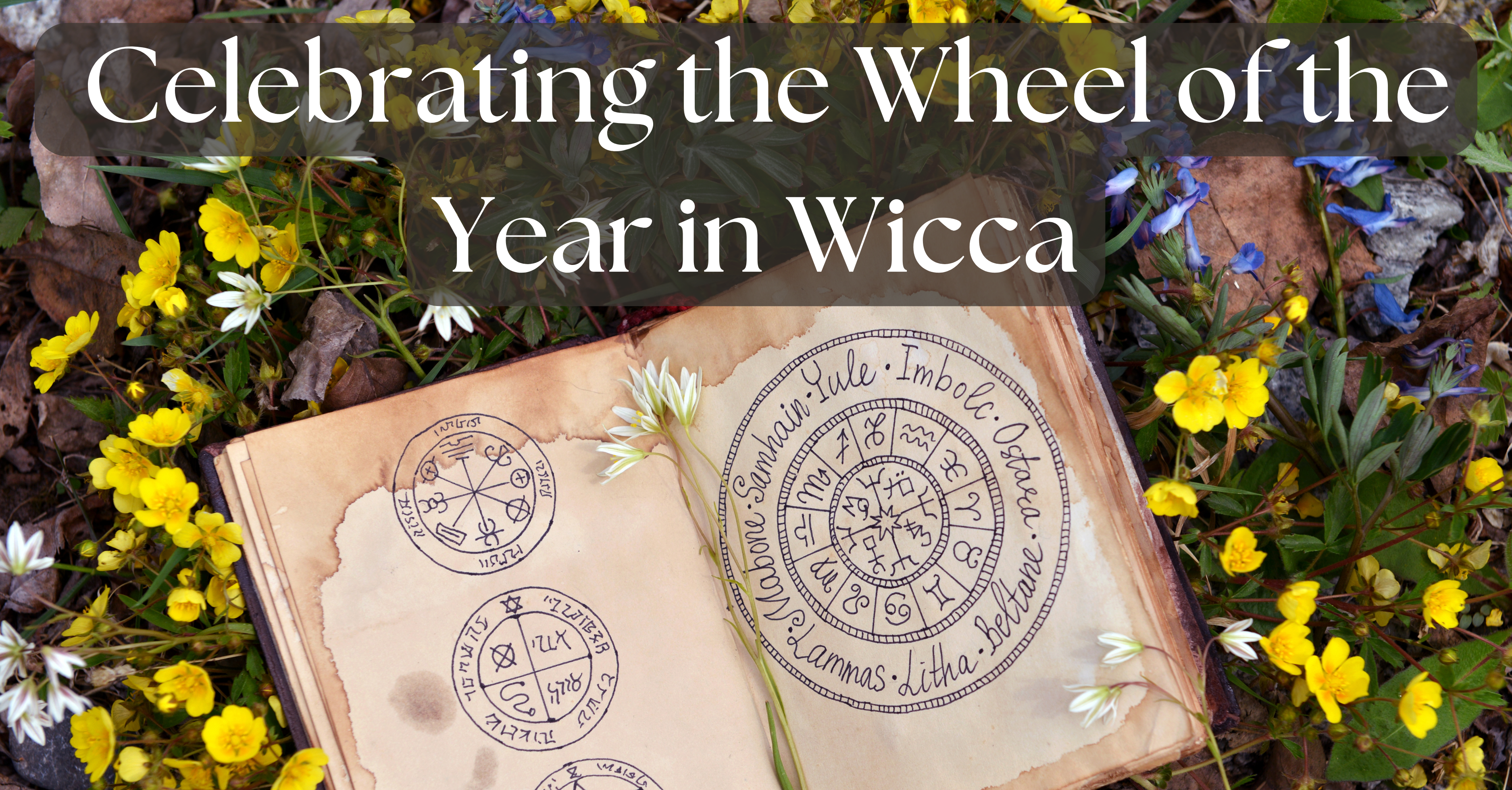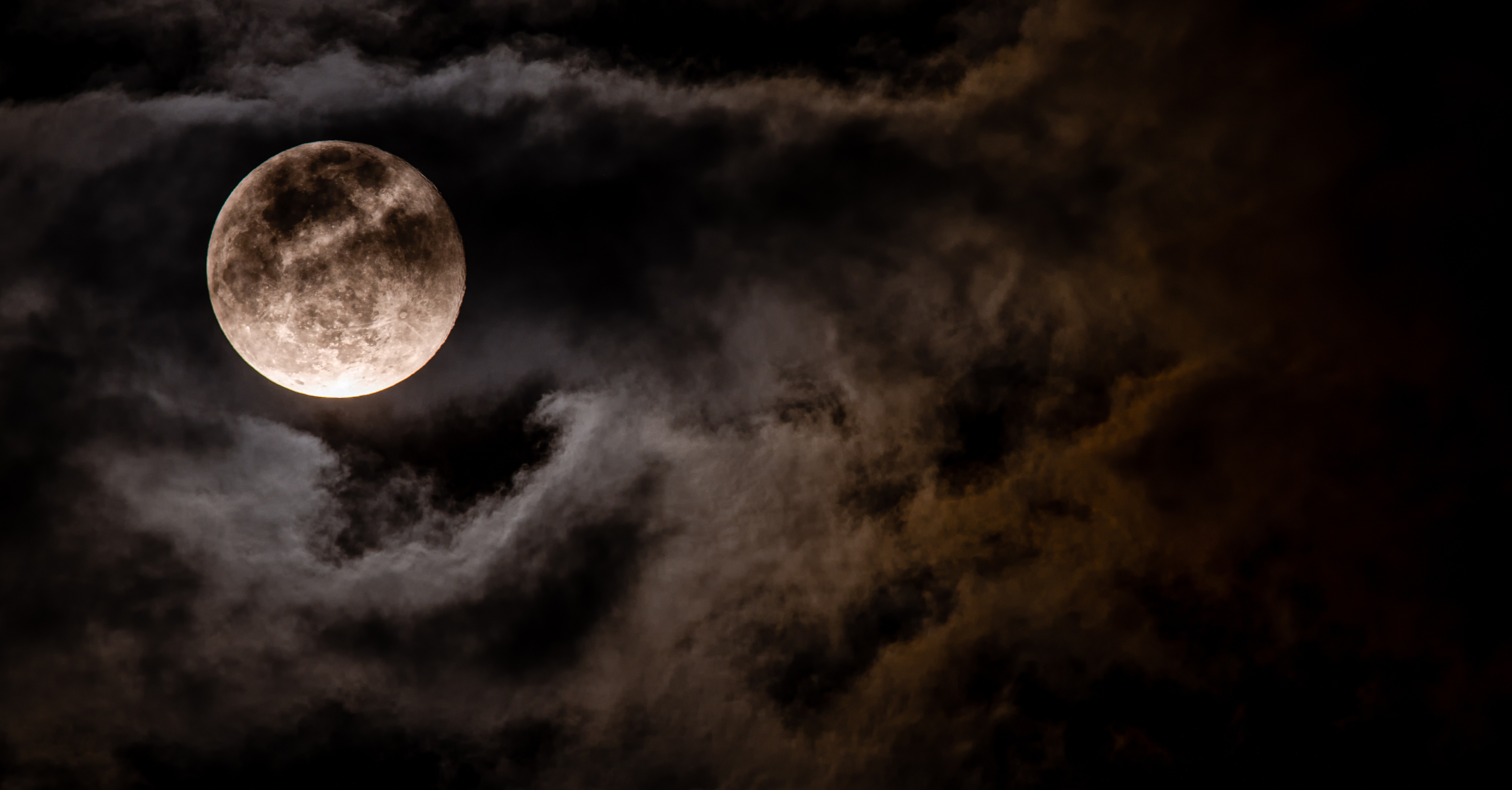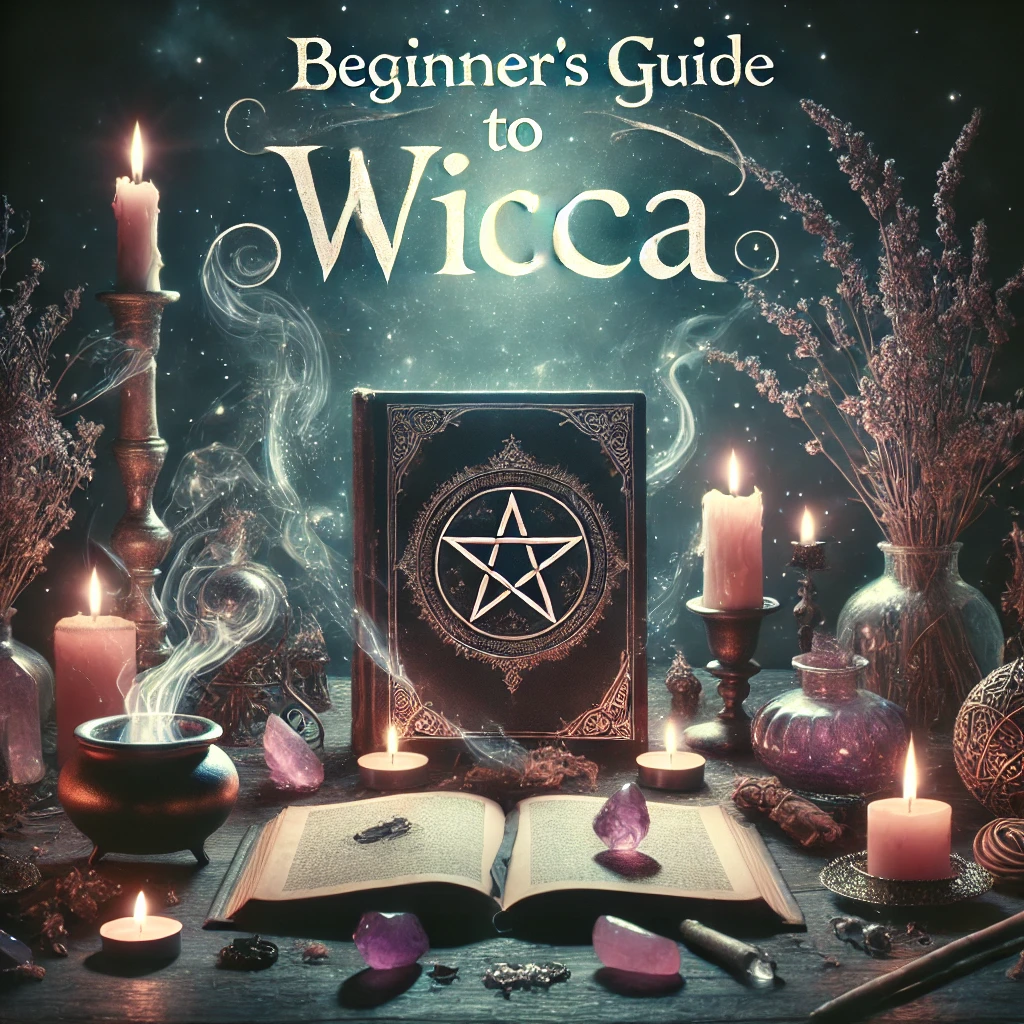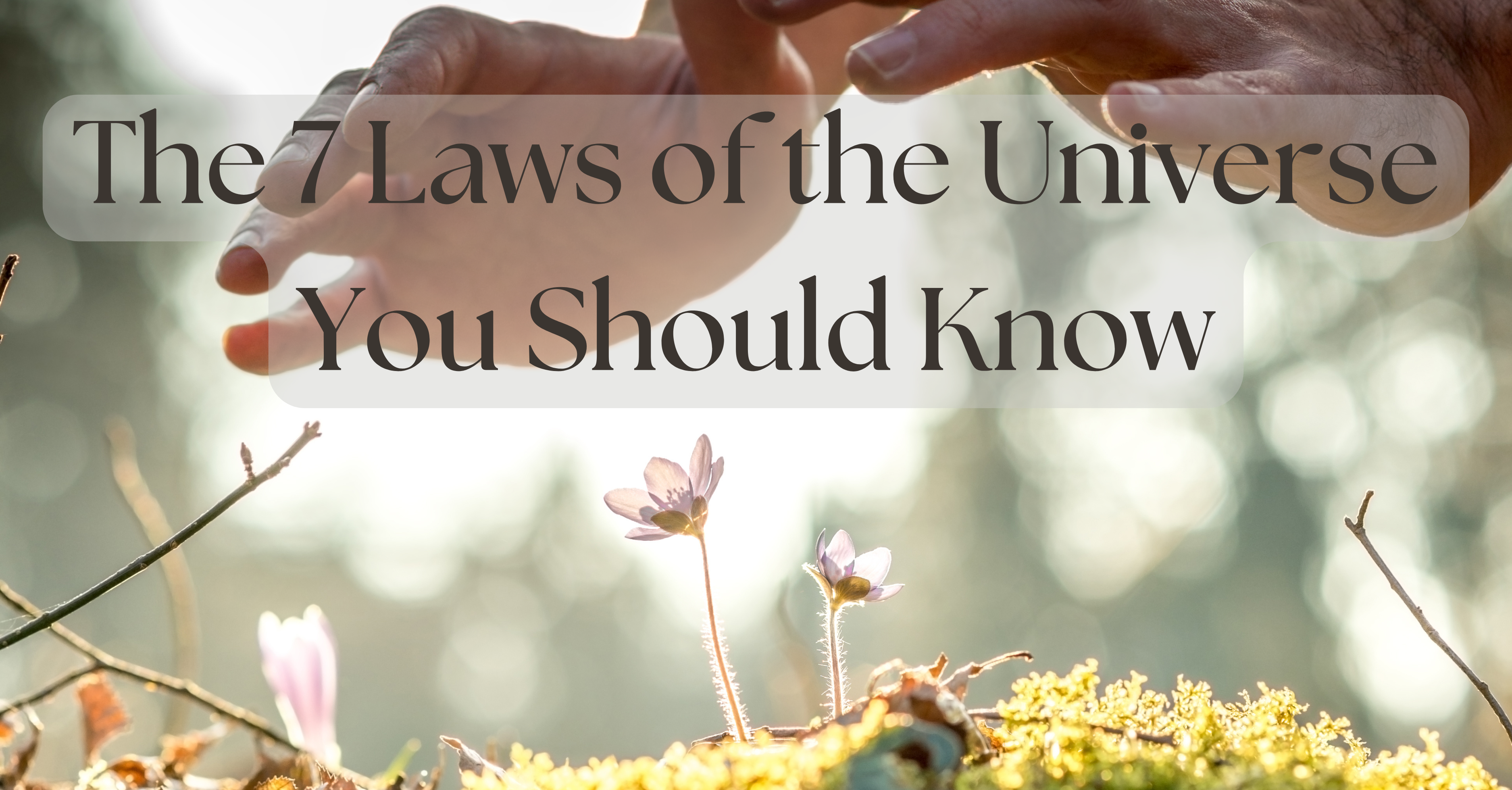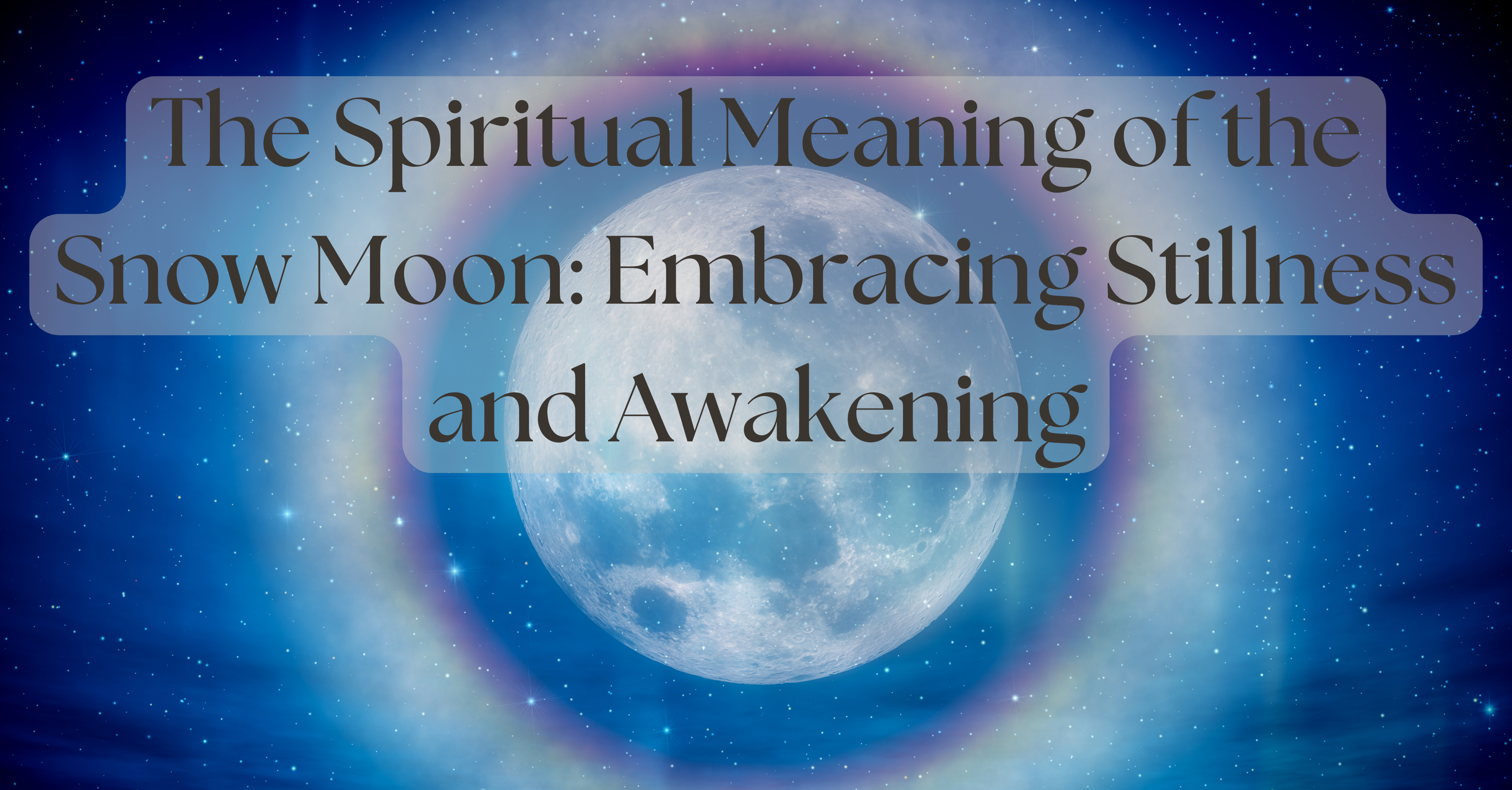The Wheel of the Year is one of my favorite parts of practicing Wicca.
If you don’t know what that is, It’s a cycle of eight festivals (Sabbats), that represents cycles of earth through the year. They celebrate nature’s seasons and the ongoing cycle of life, death, and rebirth. These celebrations remind us to stay connected to the world around us and honor the lessons each season brings.
When I first learned about the Sabbats it felt a little overwhelming.
While I liked the idea of having an outline to follow. To focus my practice around. I also felt completely unprepared.
Over time, I became more comfortable with the wheel of the year. And that uncertainty was replaced by a feeling of connectedness to the earth and the energy that surrounds us all.
The Wheel of the Year became a map for living more intentionally. It gave me a consistent way to connect to nature and even to myself.
What is the Wheel of the Year
The Wheel of the Year represents the cyclical nature of life and our, often forgotten, deep connection to the Earth’s rhythms.
Each Sabbat marks a specific point in the solar calendar, reflecting the changing seasons and the balance of light and dark throughout the year.
In Wicca, these festivals serve as a spiritual framework for growth, introspection, and renewal. By aligning with the natural cycles of the earth around us, we acknowledge ourselves and inseparable from nature.
The Wheel turns continually, reminding us that endings are always followed by new beginnings. If we focus on each aspect of the wheel of the year we are able to complete full cycles in our own life, which in turn makes our lives feel more complete and whole.
The Eight Sabbats
The Wheel of the Year is a balanced cycle of light and dark Sabbats, reflecting the ebb and flow of energy in nature.
- The Light Half in Spring and Summer (Focus on growth, abundance, and the increasing presence of light)
- Imbolc
- Ostra
- Beltane
- Litha
- The Dark Half in Fall and Winter (Focus on rest, introspection, and the increasing presence of darkness)
- Lammas/Lughnasadh
- Mabon
- Samhain
- Yule
Each one has its own energy, its own meaning, and celebrating them has become a way for me to pause, reflect, and feel more grounded.
1. Imbolc (Usually February 1st or 2nd)
Imbolc is when the first hints of spring appear, a magical moment in the Wheel of the Year that whispers of renewal and potential. In nature, the world is starting to wake up from its winter rest. The stirrings of life begin to show around us, whether in the first shoots of green breaking through the soil or the subtle lengthening of daylight.
It’s a time for creativity, cleansing, and fresh starts. As the Earth prepares for a season of growth, we are invited to do the same within ourselves. This is the perfect opportunity to reflect on what no longer serves us and to release old, stagnant energy—whether it’s physical clutter in our homes or emotional baggage that weighs us down.
I always associate this Sabbat with clearing out old energy—physically and spiritually—and making space for inspiration to flow.
There’s something incredibly empowering about creating a clean slate, knowing that it’s the fertile ground where new ideas, projects, and dreams can take root. For me, it’s a time to light candles, sweep the floors, and set intentions that align with the growing light and the potential it brings.
2. Ostara (Spring Equinox)
Ostara is a celebration of balance and renewal, as the Spring Equinox brings day and night into perfect harmony. It’s a pivotal moment where the light officially begins to overtake the darkness. This symbolizing growth, hope, and the promise of brighter days ahead.
We see this energy reflected in nature. The flowers begin to bloom, trees grow new leaves, and animals return to activity after the stillness of winter. It’s a time bursting with the energy of potential and possibility.
This Sabbat is a beautiful opportunity to honor growth and renewal within ourselves. We can use this energy to see early growth in our lives and continue to plant seeds of our own goals and dreams. It’s a chance to set intentions on what we want to cultivate in the months ahead, whether that’s a personal project, a new habit, or spiritual growth.
Ostara is one of the most powerful Sabbats for me. Where intention meets action, after the long rest of winter. I use this energy to start fresh projects or revisit goals that may have been dormant during the winter months. For me, Ostara is an invitation to embrace change, take action, and welcome the opportunities that come during this season of renewal.
Whether it’s through tending to your garden, journaling your intentions, or starting something new, Ostara is the perfect time to align with the energy of growth and let the energy of spring inspire you.
3. Beltane (May 1st)
Beltane is a vibrant celebration of love, passion, and fertility that marks the height of spring and the approach of summer. The air is electric with energy, and nature is in full bloom, buzzing with life and creativity. This Sabbat is deeply rooted in honoring the cycles of life—it’s about celebrating the union of energies that bring growth and abundance, both in the natural world and in our personal lives.
Traditionally, Beltane was celebrated with bonfires and dances, symbolizing the warmth and vitality of the sun as it strengthens toward the summer months. These fires were believed to bring protection, blessings, and prosperity. While we may not all have the opportunity to dance around a bonfire, we can still tap into the fiery energy of Beltane in other meaningful ways. Lighting candles is a simple yet powerful way to connect with the flame’s transformative energy, symbolizing our passions and creativity.
For me, Beltane is also about spending time outdoors, soaking in the beauty and abundance of the season. Whether it’s a walk through a blooming garden, a picnic in the park, or simply sitting under the sun, connecting with the Earth at this time feels especially magical. It’s a reminder to honor the love and passion within ourselves and our relationships, to celebrate the joys of life, and to welcome the creative forces that inspire us.
Beltane encourages us to embrace our desires and take bold steps toward what ignites our spirit. It’s a time to honor love in all its forms—romantic, platonic, or self-love—and to let the vibrant energy of the season fuel our intentions and dreams. Whether through rituals, creativity, or simply appreciating the beauty of the world around us, Beltane invites us to celebrate life in all its passionate, fiery glory.
4. Litha (Summer Solstice)
Litha, also known as the Summer Solstice, is the longest day of the year and holds significant power within the Wiccan Wheel of the Year. It marks the point when the Sun reaches its highest peak in the sky, casting the longest daylight hours, and symbolizes the fullness of light, energy, and vitality. This is a time of celebration, a joyous occasion to honor the abundance in our lives and the thriving energy of nature.
Litha is a moment to reflect on the growth and achievements you’ve made so far. Just as the Earth is abundant with crops, flowers, and vibrant life, this is an opportunity to acknowledge the fruits of your own labor. Whether it’s personal growth, accomplishments in your spiritual practice, or progress in manifesting your desires, Litha encourages you to pause and appreciate how far you’ve come.
The Sun’s energy at this time is especially potent, and it invites you to soak in its warmth and life-giving power. It’s a time to reconnect with the vital energy that fuels not just the Earth but your own spirit. You might spend time outdoors, basking in the sunlight, or incorporate solar imagery and energy into your rituals. This can be a time of cleansing, as the Sun’s radiant energy illuminates areas in your life that might need attention or healing.
Litha also signifies the peak of vitality and strength, so it’s a powerful moment to celebrate the fullness of life itself. It’s about embracing joy, love, and the creative spark that drives you forward. The season invites you to celebrate the abundance of the natural world by participating in outdoor activities, feasting, and honoring the earth’s cycles. It’s a great time for connecting with nature, planting new seeds (both literally and metaphorically), and welcoming the magical energies that flow through the vibrant summer months.
As Litha marks the zenith of the Sun’s journey, it is a reminder to honor balance. After this peak, the Sun’s energy begins to wane, so Litha is also a time to reflect on the cycles of life — acknowledging both the highs and lows, the light and dark. In this moment of fullness, we find beauty in the ever-changing nature of existence.
5. Lammas/Lughnasadh (August 1st)
Lammas, also known as Lughnasadh, is the first of the three harvest festivals in the Wiccan Wheel of the Year. It marks the beginning of the harvest season, a time to gather the fruits of our labor and give thanks for the abundance that the Earth provides. This festival is deeply connected to the cycles of nature, as it celebrates the grain harvest — particularly wheat, barley, and other cereal crops. It is a time to honor not only the Earth’s bounty but also the effort, dedication, and work that has gone into manifesting the blessings we now enjoy.
For me, Lammas is a personal reminder of the hard work, patience, and persistence that goes into achieving our goals. It’s a time to reflect on the effort we’ve put forth throughout the year and the progress we’ve made in our lives, whether in our spiritual practices, personal goals, or relationships. Just as the crops didn’t grow overnight, our own successes are the result of steady commitment, intention, and action. Lammas invites us to pause and give thanks for all that we’ve accomplished, acknowledging the value of the work behind the rewards.
One of my favorite ways to mark this day is by baking or cooking something special. The act of preparing food that honors the harvest is a sacred practice, a way of grounding myself in gratitude. I love to bake bread or make a dish with seasonal vegetables or grains, symbolizing the abundance and nourishment that the Earth provides. There’s something deeply magical about creating something with my own hands, using the ingredients that come from the land, and offering it as a symbol of thanks. Whether you bake a loaf of bread, prepare a hearty soup, or craft a dish with the fruits of the season, cooking at Lammas connects me to the natural rhythms and reminds me of the importance of nourishment, both physical and spiritual.
In addition to personal rituals, Lammas also invites community gatherings, where we can come together to celebrate the harvest, share meals, and offer gratitude for the abundance in our lives. This time is about not just recognizing our own efforts but also honoring the interconnectedness of all beings — from the plants and animals that sustain us to the people who support us along the way.
As we celebrate Lammas, we acknowledge the fullness of the harvest but also the seeds of potential that lie ahead. While the first fruits are gathered, there’s still more to come in the seasons ahead. This festival teaches us to appreciate where we are in the process and to stay open to what is yet to unfold.
6. Mabon (Autumn Equinox)
Mabon, the second of the three harvest festivals in the Wiccan Wheel of the Year, occurs at the Autumn Equinox. This time marks the balance between light and dark, day and night, and represents the second harvest — a season of gathering the fruits of the Earth before the energy begins to shift toward the slower, more introspective months ahead. It is a time of gratitude, reflection, and renewal, where we pause to honor the abundance we have received and prepare for the coming winter.
Mabon invites us to look at where we are in the cycle of the year — both in nature and in our personal lives. As the harvest continues, it’s an opportunity to reflect on the journey we’ve taken so far, acknowledging the fruits of our efforts, just as the Earth offers its bounty of apples, grapes, root vegetables, and grains. This festival encourages us to pause and express gratitude for the abundance in our lives, not only for the material rewards but also for the lessons learned, the relationships nurtured, and the growth we’ve experienced.
For me, Mabon is a time to reflect deeply on balance — particularly the balance between work and rest, activity and stillness. The Autumn Equinox is a perfect symbol of this equilibrium, where light and dark are equal. This balance is reflected in our own lives as we consider how to align our energies with the changing seasons. Mabon reminds us that just as we must work to harvest the crops, we also need to honor the need for rest and renewal as we prepare for the colder, quieter months.
It’s a time to begin transitioning our focus inward, taking stock of the year’s achievements and the lessons learned, and preparing ourselves for the reflection and introspection that winter often brings. This can be a period of simplifying our lives, letting go of what no longer serves us, and preparing our homes and hearts for the slower, more restful months ahead.
I often take this time to pause, express thanks for everything I’ve gathered — both materially and spiritually — and connect with the changing season. Whether it’s taking a walk in the crisp autumn air, enjoying the harvest by creating a seasonal meal, or simply sitting with a cup of tea and reflecting, Mabon offers a moment of stillness and appreciation. I enjoy celebrating the vibrant colors and the rich energies of autumn, as the Earth prepares for its slumber. The changing leaves, the cool breeze, and the harvest fruits all serve as a reminder to honor the cyclical nature of life.
Mabon also emphasizes the importance of community. Just as we share in the harvest with others, this is a time to come together and celebrate the year’s blessings with loved ones. Whether through a feast, a quiet gathering, or a ritual to honor the season, Mabon is a time to share our gratitude and strengthen our connections with others.
As we celebrate Mabon, we recognize that the balance of light and dark exists not only in nature but also within ourselves. This festival teaches us to find equilibrium in our lives, honor the ebb and flow of energy, and embrace the transition toward the quieter months of the year with grace and gratitude.
7. Samhain (October 31st)
Samhain, often referred to as the Wiccan New Year, is one of the most spiritually significant Sabbats in the Wheel of the Year. It occurs at the end of October and marks the beginning of the darker half of the year. This festival, often called the “Festival of the Dead,” holds profound meaning as it represents a time of reflection, honoring the cycles of life and death, and embracing transformation. Samhain is not only about looking back at what has passed, but also preparing for what lies ahead, making it a deeply introspective and spiritual time.
One of the most powerful aspects of Samhain is the thinning of the veil between the physical world and the spiritual realm. It is believed that, during this time, the barrier between the living and the dead is at its weakest, allowing us to connect more easily with ancestors, spirits, and loved ones who have passed. This is a time to honor those who have come before us — whether through quiet remembrance, setting up an ancestor altar, or performing rituals to invite their guidance and blessings. The energy of Samhain is one of honoring the continuity of life, acknowledging the cyclical nature of existence, and understanding that death is not an end, but a transition.
For me, Samhain is about both letting go and embracing transformation. It’s a time to release what no longer serves me — whether that’s old habits, relationships, or fears — and make space for new growth and possibilities. As the natural world around us begins its descent into dormancy, Samhain offers an opportunity for inner reflection. Just as the trees shed their leaves and the Earth prepares for winter’s rest, we too are invited to release what’s no longer needed, allowing ourselves to move into the darkness with the intention of rebirth.
This process of letting go is not only about clearing away the old but also about embracing transformation. Samhain invites us to recognize that the end of one cycle often leads to the beginning of another. Just as the Earth is in a period of rest and renewal, we too can transform ourselves, knowing that the darkness of winter is a fertile ground for new ideas, dreams, and inspirations to take root.
In addition to honoring ancestors and reflecting on the cycles of life and death, Samhain also encourages us to focus on personal transformation. This is a powerful time to set intentions for the coming year, especially those related to change, healing, and growth. Whether through divination practices like scrying, tarot, or pendulum work, or by simply meditating on the transformations you wish to invite into your life, Samhain offers a magical space to reconnect with your spiritual path.
For many, this festival is also a time to celebrate the harvest of the darker months, where we gather what we’ve learned and the wisdom we’ve gained throughout the year. It’s a time for reflection, honoring the journey, and acknowledging that both light and dark have their place in our lives.
Samhain rituals often include honoring the ancestors by setting up altars with pictures, symbols, or offerings, lighting candles, and reflecting on their impact on our lives. It’s also a time for rituals of protection, transformation, and guidance for the coming year. As we honor the sacredness of death, we also celebrate life and the promise of new beginnings.
Samhain, with its profound energy of connection, release, and rebirth, is a powerful moment to reconnect with the spiritual aspects of life, to reflect on our own transformations, and to honor the cycles of existence that weave through all things.
8. Yule (Winter Solstice)
Yule, the Winter Solstice, is the longest night of the year and holds deep significance in the Wiccan Wheel of the Year. It marks the Sun’s return, a celebration of light after the darkest and longest night, symbolizing renewal, hope, and the promise of new beginnings. While the world around us may seem quiet and still, this is a time of deep spiritual power — a moment to honor the rebirth of the Sun and the cycles of nature that govern our lives.
Yule is a celebration of the Sun’s return, acknowledging the turning point of the year when the darkness begins to wane and the light begins to grow again. This is a time of renewal, both in the natural world and within ourselves. Just as the Sun slowly starts to regain its strength, so too do we find new energy within us, ready to emerge from the rest and reflection of the dark months and step into a period of creation and growth. Yule is a reminder that, even in the darkest times, there is always the potential for renewal and transformation.
For me, Yule is a cozy, introspective time. The stillness of winter invites me to slow down, rest, and reflect on the year behind me. I take this time to light candles — symbolic of the Sun’s returning light — and sit in the glow, allowing their warmth to bring comfort and clarity. It’s a gentle, peaceful time to honor the cycles of the year and acknowledge what has been accomplished, what lessons have been learned, and what growth has taken place. It’s also a time to express gratitude for the abundance in my life, both material and spiritual, and to prepare myself for the next chapter.
As the year comes to a close, I find it deeply meaningful to reflect on the past and think about what I want to create in the year ahead. Yule offers a space for intention-setting, a time to plant the seeds for the coming year. It’s an opportunity to visualize new goals, dreams, and desires, and begin to align myself with the energy of renewal. This season is about embracing the promise of light, hope, and new beginnings. Just as the Sun gradually returns to the sky, so too can we begin to bring our visions into the world, step by step.
The peaceful energy of Yule encourages quiet reflection and introspection. It’s a time to journal, meditate, or perform rituals that help connect to the deeper, more sacred aspects of life. Whether through setting intentions, doing divination work, or simply spending time in nature, Yule is a moment to honor the transition from darkness to light, both externally and within ourselves.
While Yule is often associated with rest, reflection, and introspection, it is also a time to celebrate. The long night offers a space for joy, gratitude, and connection with loved ones. Yule feasts, gifting, and rituals help bring warmth and light to the darkest days of the year, creating moments of joy and sharing. It’s a beautiful balance of honoring the quiet and stillness of winter, while celebrating the impending return of the light.
Yule is a time for renewal — a chance to recharge, to embrace the hope that comes with the return of the Sun, and to honor the cycles of both nature and spirit. It’s a time to rest, reflect, and set new intentions for the journey ahead, knowing that, like the Sun, we too can rise again, stronger and brighter.
Making the Sabbats Your Own
One of the things I love most about Wicca is how personal it can be. There’s no “right” way to celebrate the Sabbats, which means you can create traditions that work for you.
Sometimes I go all out with rituals and seasonal feasts, but other times I keep it simple—lighting a candle, journaling, or taking a quiet walk outside. The key is finding ways to connect with the season’s energy in a way that feels meaningful to you.
Why the Wheel Matters
For me, the Wheel of the Year is more than just a calendar; it’s a way to stay connected to nature and myself. It’s a reminder to slow down, honor where I am, and embrace the beauty of life’s cycles.
Celebrating the Sabbats has brought so much joy and perspective to my life. It’s helped me feel more in tune with the world around me and more intentional in how I move through the year.
Do you celebrate the Sabbats? I’d love to hear about your favorite traditions and how you make them your own!

